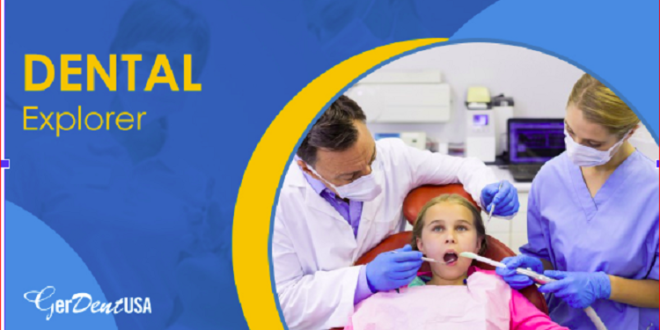There are several kinds of dental surgical instruments. They all are ergonomic according to their need. Some of them are diagnostic. Others are operating or used during the restorative phase. The importance of oral surgery tools depends upon their degree of use. Those which have frequent use are more important than those which are rarely used. Dental explorers are among the most important dental tools. The other name for these instruments is “Sickle-probe.” They are useful in the diagnosis as well as in the restorative phase. They have robust structures as per their needs. Experts use these tools to detect dental defects, including cries, calculus, and plaque. They have flexible pointy end. And through this end, the surgeon’s hand can detect the tactile sensations. If there’s any hard material between the teeth, the dentist will get it through the vibration. Moreover, dentists can also explore the lesions and cavities with the tip.
During the restorative phase, they help detect if the cavities are filling. However, in this phase, they can cause some serious damages that we will discuss later.
These special dental instruments can be double-ended or single-ended. Besides, they can be straight, curved, or interproximal.
Among the explorer dental instruments, No. 23 explorer (another name “shepherd’s hook”), 3CH, also called “cow-horn” or “pigtail,” and No. 17 explorers are the most common types.
Role of Dental Explorers
As mentioned above, they are basically diagnostic dental surgical instruments. They are helpful in the dental armamentarium. Dentists use them to detect different dental defects. They aid surgeons in detecting calculus and exploring pockets. Tooth explorers are also helpful in furcation and restoration. At the initial stage of oral diagnosis, explorers assist dentists in mapping out calculus deposits. While at the final phase of dental surgery, these special oral instruments help find the degree of calculus removal. They also explore the efficiency of the overall procedure. With their pointy ends, dental surgeons can find spots and delicate holes in the decaying tooth. Tooth explorer instruments can also help detect food deposits under the gum.
Using Technique of Explorer Dental Instrument
The using technique is the most experimental phase of any surgical instrument. Also, the effectiveness of the procedure depends upon its using technique. A wrongly used instrument may cause problems instead of treatment. Dental explorers are very sharp tools. They have a very fine pointy end. So, care must be taken while using it. Inside the mouth, the structure is very delicate and complex. Therefore, being an oral surgeon, dentist, orthodontist, prosthodontist, endodontist, or periodontist, master the right technique of this sharp dental tool.
While using the explorer dental tool, keep its tip in constant contact with the dental surface. It should curve around the oral surface you are working on. Use the right working end for the distal and mesial of the tooth. Do not grip the instrument too firmly. Softly touch deposits with it. In case of lesions and filling cavities, be more careful. Besides, avoid pressing the middle finger forcefully. When a tooth explorer is placed inside the dental structure, follow short strokes. Strokes of the usual 2-3 millimetres are more effective. For accurate evaluation of the deposit, thoroughly roll the instrument around the surface.
Pros & Cons of dental explorers
All the pros of this special dental tool have been discussed above. Surgeons have been using this instrument for decades. This tool is very helpful for the accurate evaluation of dental defects. No other tool can be much more precise. Moreover, it is a multi-functional dental instrument. It helps in diagnostic as well as restorative phase.
If we talk about its cons, we come across some drawbacks. At the beginning of the twenty-first century, some dental experts claimed that tooth explorers are too much sharp tools to use. They suggested using probes or blunt tip instruments. Also, they mentioned diagnosing the patient’s oral health with sharp eyes.
No doubt, the dental explorer is a sharp object. It can penetrate deeper and damage lesions and cavitation. It can also hurt the gum during the procedure. Moving on, it can affect remineralizing areas. Even so, it is an atraumatic instrument.
As a final argument, the tooth explorer is an ideal dental instrument. Its sharp ends and ergonomic handle make it a valuable diagnostic and restorative tool. Every dentistry expert and clinician should have it at the clinic.
The best suppliers of explorer tooth instruments
If you are an oral surgeon, dentist, orthodontist, prosthodontist, endodontist, or periodontist, make sure you have a prime quality explorer dental tool. And if you are looking for ergonomic dental explorers, contact GerMedUSA Inc. We have german stainless steel body tooth explorers. All types and variations are available. Besides, you can buy all dental surgical instruments of the best quality.
 HammBurg Be informed with latest news, reviews, entertainment, lifestyle tips, and much more.
HammBurg Be informed with latest news, reviews, entertainment, lifestyle tips, and much more.




